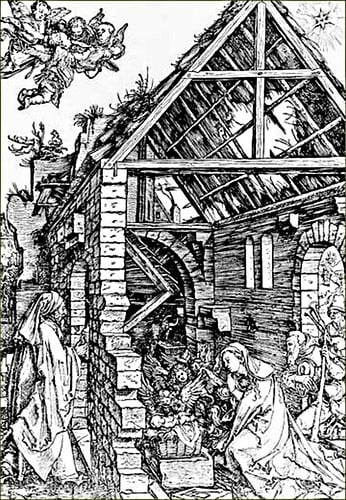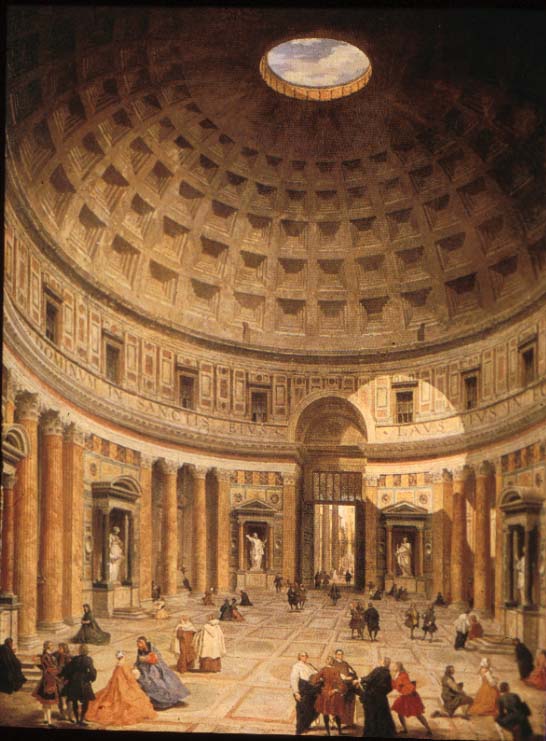Western Civilization I CLEP Prep

More questions to prepare you for the CLEP.
- 1.
In 721 B.C.E. the ___________ deported the Hebrews from Israel, who vanished as the Ten Lost Tribes of history.
- A.
Assyrians
- B.
Neo-Babylonians
- C.
Persians
- D.
Egyptians
Correct Answer
A. AssyriansExplanation
The Neo-Babylonians deported the people of Judea, but they were able to return home after the Persians overthrew the Neo-Babylonians.Rate this question:
-
- 2.
The above work is:
- A.
A Flemish masterpiece by Rogier van der Weyden.
- B.
Naturalistic representation by Raphael.
- C.
A scene of peasant life by Pieter Brugel the Elder.
- D.
The print of an engraving by Albrecht Durer.
Correct Answer
D. The print of an engraving by Albrecht Durer.Explanation
The given options describe different artworks by different artists. The correct answer states that the above work is "The print of an engraving by Albrecht Durer." This implies that the artwork in question is a print made from an engraving created by Albrecht Durer, a renowned German artist.Rate this question:
-
- 3.
The picture above shows:
- A.
The Roman Pantheon
- B.
The Athenian Parthenon
- C.
The Reims Cathedral
- D.
The Basilica of San Vitale
Correct Answer
A. The Roman PantheonExplanation
The picture above shows the Roman Pantheon. The Roman Pantheon is a famous ancient temple located in Rome, Italy. It is known for its impressive dome and magnificent architecture. The Pantheon was originally built as a temple dedicated to all the gods of ancient Rome. It is one of the best-preserved ancient Roman buildings and is now a popular tourist attraction. The dome of the Pantheon is a remarkable engineering feat and is considered one of the largest unreinforced concrete domes in the world.Rate this question:
-
- 4.
Jean Buridan and Nicole Oresme:
- A.
Challenged Arisotle's theory of motion in their theory of impetus.
- B.
Were credited with the invention of the pendulum clock
- C.
Translated ancient scientific texts into Latin.
- D.
Were realists who maintained that universal concepts substantially exist in an intelligible world.
Correct Answer
A. Challenged Arisotle's theory of motion in their theory of impetus.Explanation
Jean Buridan and Nicole Oresme challenged Aristotle's theory of motion in their theory of impetus. This means that they disagreed with Aristotle's explanation of how objects move and proposed their own concept of impetus to explain the motion of objects. Their theory of impetus suggested that a moving object possesses an inherent force that keeps it in motion, rather than being solely influenced by external forces. By challenging Aristotle's theory, Buridan and Oresme contributed to the development of new ideas and understandings in the field of motion and physics.Rate this question:
-
- 5.
Coluccio Salutati and Leonardo Bruni were different from Francesco Petrarch in that they:
- A.
Were not exiled by the Medici family before France invaded Italy.
- B.
Were hostile to university culture, and developed their ideas outside of that system.
- C.
Advocated "civic humanism," in which they were involved with public life.
- D.
Attempted to live private, contemplative lives as so-called "secular monks."
Correct Answer
C. Advocated "civic humanism," in which they were involved with public life.Explanation
Coluccio Salutati and Leonardo Bruni differed from Francesco Petrarch because they advocated "civic humanism," which involved actively participating in public life. Unlike Petrarch, who focused on individual introspection and contemplation, Salutati and Bruni believed in engaging with society and using their ideas to contribute to the betterment of their communities. They were not exiled by the Medici family before the French invasion of Italy, as mentioned in the other options, making the advocacy of "civic humanism" the correct answer.Rate this question:
-
- 6.
Who wrote Praise of Folly in an attempt to reform the church from within?
- A.
Meister Eckhart
- B.
Gerard Groote
- C.
Thomas More
- D.
Erasmus
Correct Answer
D. ErasmusExplanation
Erasmus wrote "Praise of Folly" in an attempt to reform the church from within. This satirical work criticized the corruption and abuses within the Catholic Church during the Renaissance. Erasmus believed that by exposing these issues and calling for reform, he could help bring about positive change within the church. His work became widely popular and influential, contributing to the broader movement for religious reform during this time period.Rate this question:
-
- 7.
Institutes of the Christian Religion:
- A.
Helped to establish the Reformed tradition of Protestantism
- B.
Stressed the importance of personal faith in the role of an individual's salvation.
- C.
Rejected as heretical all doctrines unapproved by the Pope.
- D.
Described the theological dogma of the Anglican Church.
Correct Answer
A. Helped to establish the Reformed tradition of ProtestantismExplanation
The correct answer is "helped to establish the Reformed tradition of Protestantism." This is because the Institutes of the Christian Religion, written by John Calvin, played a significant role in shaping and defining the Reformed tradition of Protestantism. Calvin's work expounded on key theological doctrines and principles that became foundational to Reformed theology, such as the sovereignty of God, predestination, and the authority of Scripture. The Institutes became a key text for Reformed theologians and helped solidify the theological framework of the Reformed tradition.Rate this question:
-
- 8.
Name the wars in which: Francis I fights a series of wars against Charles V, in which Francis I must give up his claims to Burgundy and Italy in the Treaty of Cambrai, which only temporarily halts the fighting. When it resumes, Charles V invades France, but soon must turn some of his attention homeward when Francis I forms an alliance with the Ottomans. However, the struggle for control of Italy ends in 1559 with the Treaty of Cateau-Cambresis, which requires France to admit defeat.
- A.
Wars of the Roses
- B.
Social Wars
- C.
Hundred Years Wars
- D.
Valois-Hapsburg Wars
Correct Answer
D. Valois-Hapsburg WarsExplanation
The correct answer is Valois-Hapsburg Wars. This is because the given explanation mentions Francis I fighting a series of wars against Charles V, which refers to the conflict between the Valois dynasty of France and the Hapsburg dynasty of Austria and Spain. The Treaty of Cambrai and the Treaty of Cateau-Cambresis are also mentioned, both of which were significant agreements during the Valois-Hapsburg Wars.Rate this question:
-
- 9.
Who is established on his throne by his victory at Bosworth Field against Richard III of York?
- A.
Henry II
- B.
Edward IV
- C.
Charles VIII
- D.
Henry VII
Correct Answer
D. Henry VIIExplanation
Henry VII is established on his throne by his victory at Bosworth Field against Richard III of York. This event marked the end of the Wars of the Roses and the beginning of the Tudor dynasty in England. Henry VII's victory solidified his claim to the throne and allowed him to establish a stable and prosperous reign.Rate this question:
-
- 10.
Simon de Montfort:
- A.
Demanded that secular rulers stop the practice of appointing their own bishops during the Investiture Controversy.
- B.
Supported the Pope against the Emperor during the 12th century.
- C.
Led the barons in a revolt against Henry III for failing to recognize the Provisions of Oxford.
- D.
Strengthened the French monarchy by calling on the Estates-General.
Correct Answer
C. Led the barons in a revolt against Henry III for failing to recognize the Provisions of Oxford.Explanation
Simon de Montfort led the barons in a revolt against Henry III for failing to recognize the Provisions of Oxford. This means that he was a key figure in a rebellion against the king due to his refusal to acknowledge and abide by the Provisions of Oxford, which were a set of reforms aimed at limiting the king's power and increasing the influence of the barons. By leading this revolt, Montfort demonstrated his commitment to challenging the authority of the monarchy and advocating for greater rights and representation for the barons.Rate this question:
-
- 11.
The Third English Civil War was between:
- A.
King Charles the II and the Long Parliament
- B.
King Charles the II and the Rump Parliament
- C.
King Charles the I and the Long Parliament.
- D.
King Charles the I and the Rump Parliament
Correct Answer
B. King Charles the II and the Rump ParliamentExplanation
The Third English Civil War was between King Charles II and the Rump Parliament. This conflict occurred after the English Restoration, when Charles II was restored to the throne after the Interregnum period. The Rump Parliament, which was the remnant of the Long Parliament, had been dissolved by Oliver Cromwell. However, tensions between the monarchy and Parliament persisted, leading to the outbreak of the Third Civil War. Charles II sought to regain control over the government, but ultimately, the conflict ended in his defeat and the establishment of a more stable constitutional monarchy in England.Rate this question:
-
- 12.
The Petition of Right:
- A.
Was written in response to Charles the I's use of forced loans.
- B.
Gave the Crown of England to the Stuart Dynasty of Scotland.
- C.
Demanded the persecution of Catholics, leading to the Gunpowder Plot of 1605.
- D.
Protested the use of the Anglican Book of Common Prayer.
Correct Answer
A. Was written in response to Charles the I's use of forced loans.Explanation
The Petition of Right was written in response to Charles I's use of forced loans. This document was a protest against the king's practice of forcing loans from his subjects without their consent. It sought to establish that such actions were illegal and against the rights and liberties of the people. The Petition of Right aimed to limit the power of the monarchy and protect the rights of the citizens, making it an important step in the development of constitutional law in England.Rate this question:
-
Quiz Review Timeline +
Our quizzes are rigorously reviewed, monitored and continuously updated by our expert board to maintain accuracy, relevance, and timeliness.
-
Current Version
-
Mar 19, 2023Quiz Edited by
ProProfs Editorial Team -
Feb 23, 2009Quiz Created by
Galsaturday
 Back to top
Back to top



